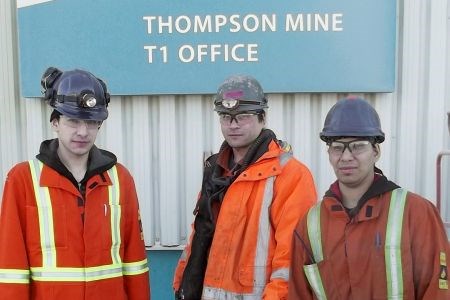Listen first.
It's the core value at Running Deer Resources, a Manitoba-based mining construction and Aboriginal consultation company that is changing the way industry interacts with the Aboriginal workforce across Canada.
For the last six years its president, Jamie Saulnier, has been working to establish a unique system that engages Aboriginal workers in the construction industry. It's comprised of a human resources database designed for Aboriginal communities, along with an Aboriginal training and apprenticeship program that provides business and employment opportunities to First Nations, Inuit and Métis people in Canada.
“The model is a very simple process,” Saulnier said. “You need to identify the people in the community that are able to work and those that are not. Those that are able to work, they go into a system that is a job bank, and those that are not able to work, then the government has the ability to build training programs and get them into an employable position.”
Saulnier was motivated, in part, to develop the model by the nationwide skilled labour shortage. Companies are searching for manpower, he noted, often flying in workers from across Canada when they could be tapping into the local workforce to fulfill their needs.
“What I'm trying to get across to everybody is that across Canada, and I mean from coast to coast and all the way up to the high Arctic, there is a tremendous workforce that's hidden basically,” he said. “Everybody is so quickly looking at other ways to build our workforce in Canada, which is immigration and all kinds of things, that we haven't really had a serious look at what's in these communities.”
Communication has been the biggest stumbling block, he said. Mining companies, for example, are often eager to hire from the local Aboriginal workforce, and will negotiate a memorandum of understanding (MOU) with a community, promising employment. But if the company hired to do the work is unaware of that agreement, that's when conflict occurs.
By having a ready database of workers and their skills available for incoming companies, both the communities and industry have access to a tool that helps them interact with each other.
Many in the industry have been skeptical that Saulnier could pull off what others have tried, but failed, to do before. The key, again, Saulnier said, has been communication. He began by spending time in Aboriginal communities, and with industry and government representatives, meeting people and talking about the issues and challenges each faced, eventually building a model that addresses them all.
Despite the time and financial commitment, Saulnier, who grew up in Ignace, was inspired by the people he met in the communities. A strong supporter of helping Aboriginal communities become self-sufficient, he believes a common misconception is the majority of people in these communities are troubled or have substance abuse issues and aren't willing to work.
“When I got into the communities and I started meeting the people, I found some really, really great people, people that don't drink or don't do drugs that are just really, really looking for work,” he said.
Though originally designed for internal use at Running Deer, run by Saulnier and his partner, Kliff Lengwenus, they soon realized the model was relevant to mining, oil and gas, and other industries. After its completion this winter, buzz around the model has been gathering as word of its potential spreads.
Saulnier believes it's applicable on a national level, and he's now connecting with those companies and communities interested in adopting the model. Oil companies in Alberta, major mining companies in Manitoba and Ontario, and two tribal councils encompassing more than 24 communities are amongst those that have expressed their interest.
“The end goal for me is to have every Aboriginal community in Canada have a system in place that allows them to engage with our industry,” Saulnier said. “That's the end of the line; that's when I'm done work.”




